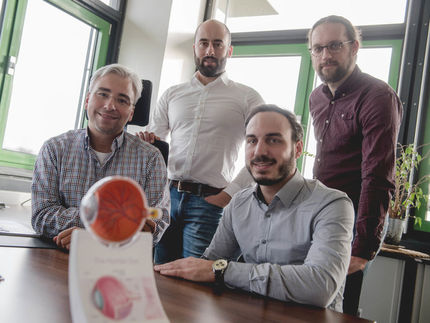Spinal cord neurons that control pain and itch
Advertisement
The spinal cord transmits pain signals to the brain, where they are consciously perceived. But not all the impulses arrive at their destination: Certain neurons act as checkpoints and determine whether a pain signal is relayed or not. Researchers from UZH identified these neurons and their connections. Moreover, they developed means to specifically activate these neurons, which reduces not only pain – but astonishingly also alleviates itch.
Sensing pain is extremely unpleasant and sometimes hard to bear – and pain can even become chronic. The perception of pain varies a lot depending on the context in which it is experienced. 50 years ago, neurobiologist Patrick Wall and psychologist Ronald Melzack formulated the so-called “Gate Control Theory” of pain. The two researchers proposed that inhibitory nerve cells in the spinal cord determine whether a pain impulse coming from the periphery, such as the foot, is relayed to the brain or not. A team headed by Hanns Ulrich Zeilhofer from the Institute of Pharmacology and Toxicology at the University of Zurich did now reveal which inhibitory neurons in the spinal cord are responsible for this control function: As the study published in the science journal Neuron shows, the control cells are located in the spinal dorsal horn and use the amino acid glycine as an inhibitory messenger.
The pain gate can be manipulated with viruses
With the aid of genetically modified viruses, the research group from UZH managed to specifically interfere with the function of these neurons in mice. They discovered that disabling the glycine-releasing neurons leads to an increased sensitivity to pain and signs of spontaneous pain. Moreover, Zeilhofer‘s team developed viruses that enable these specific pain-control cells to be activated pharmacologically. Mice treated with these viruses were less sensitive to painful stimuli than their untreated counterparts. Activating these nerve cells also alleviated chronic pain. And the surprising additional result: “Evidently, the neurons don’t just control pain, but also various forms of itch,” explains Zeilhofer.
How light touch controls pain
One key aspect of the Gate Control Theory is that various influences can modulate the pain-controlling neurons’ activity. Based on our experience from everyday life, for instance, we know that gently rubbing or holding an injured extremity can alleviate pain in this area. According to the theory, non-painful contact with the skin is supposed to activate the inhibitory cells. Sure enough, the UZH researchers were able to verify this hypothesis and confirm that the inhibitory, glycine-releasing neurons are innervated by such touch-sensitive skin nerves.
Moreover, the pharmacologists were able to demonstrate that neurons on the superficial layers of the spinal cord, where the relay of the pain signals takes place, are primarily inhibited by glycine signals. “These three findings identify for the first the neurons and connections that underlie the Gate Control Theory of pain,” sums up Zeilhofer.
Targeted therapy in humans not yet possible
Can these findings be used to treat pain? “The targeted stimulation or inhibition of particular types of neurons in humans is still a long way off and might only be possible in a few decades’ time,” says Zeilhofer. Another way may well reach the target sooner – namely via the receptors that are activated by the inhibitory neurons: “As these receptors are located on the neurons that relay pain signals to the brain, their specific pharmacological activation should also block pain,” says Hanns Ulrich Zeilhofer. His group has already achieved promising initial results in this field, too.
















































